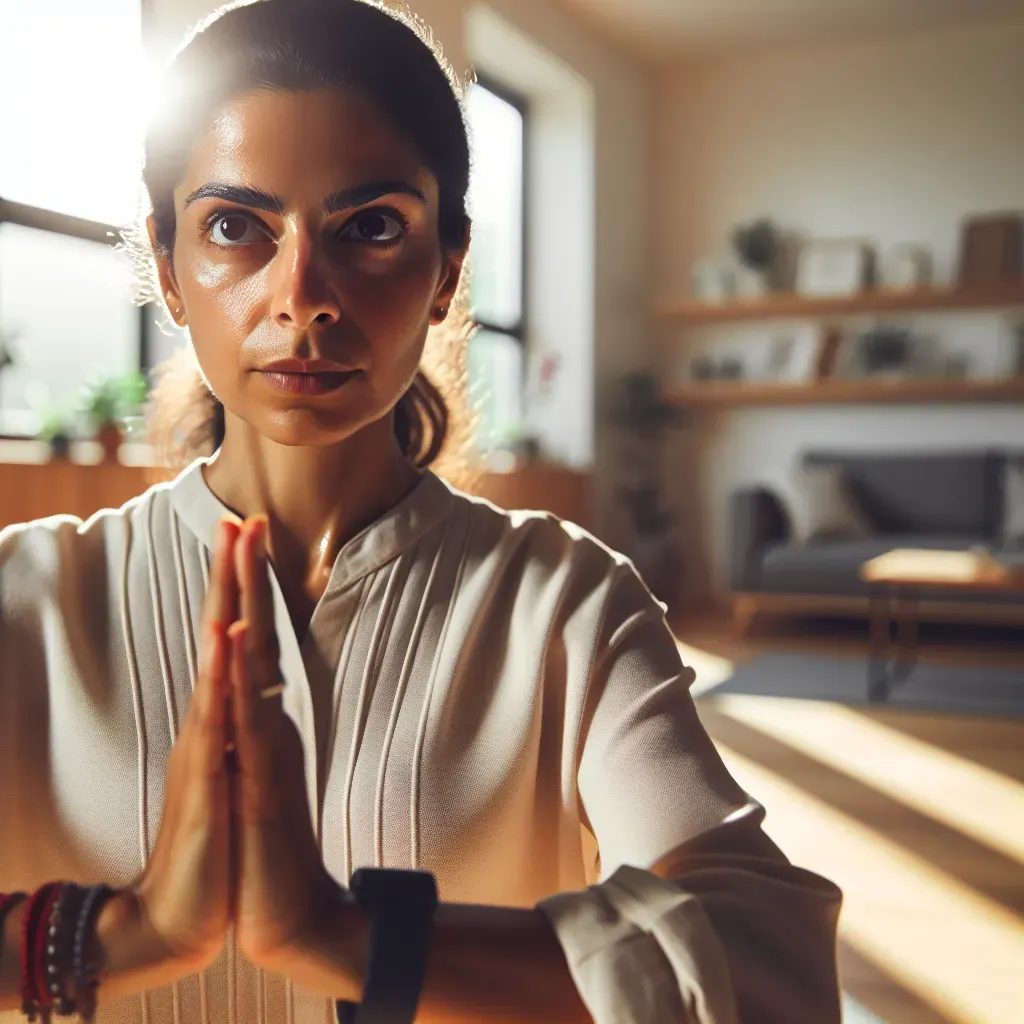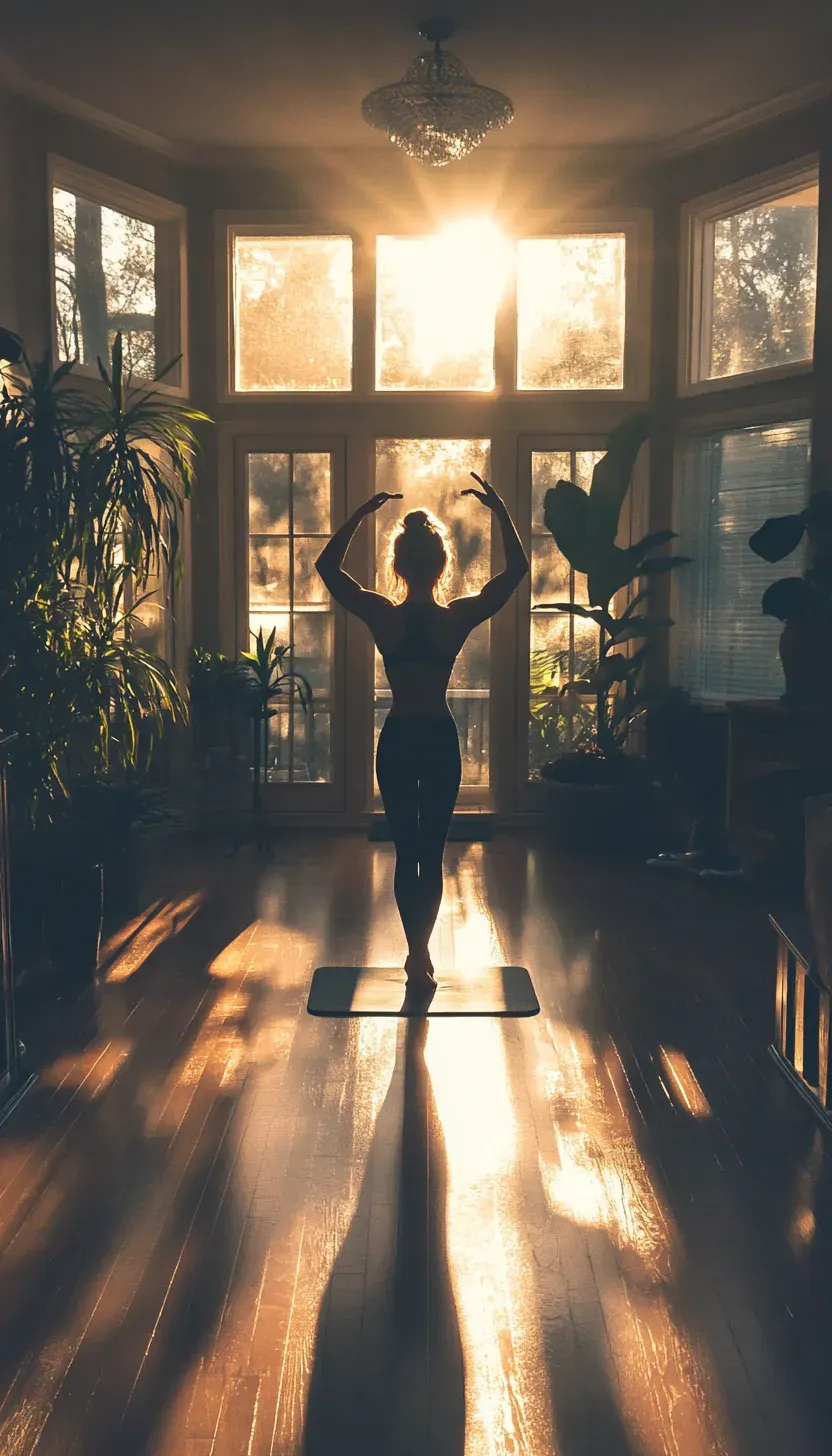Balancing Act: How Yin Yoga Elevates Your Dynamic Practice

Table of Contents
Introduction
Cosmic Dance of Yin and Yang
Embracing Yin Yoga
Enhancing Flexibility Beyond Stretching
Targeting Connective Tissues
Integration with Dynamic Practice
Embodied Experience
Cultivating Mental Resilience in High-Energy Practices
Mindfulness in Motion
Harmonizing Thoughts
Embracing Stillness
Balancing Energy Flow for Sustainable Practice
Energetic Anatomy
Complementary Practices
Holistic Balance
Enhancing Mind-Body Awareness Through Stillness
Embodied Presence
Somatic Intelligence
Integrative Wisdom
Supporting Emotional Release and Processing
Safe Exploration
Healing Journey
Empowering Transformation
Facilitating Recovery and Regeneration
Restorative Practices
Optimizing Repair
Honouring Rest
Hey, fellow yoga seeker! Are you feeling the intensity of those fiery sun salutations, or perhaps you've mastered the art of the crow pose, balancing precariously on your hands like a zen acrobat? Regardless of where you are on your yoga journey, I see you. I'm here to introduce you to a practice that complements and enhances your dynamic yoga routine in unexpected ways. Enter Yin Yoga.
In this cosmic dance of opposites yin and yang, fire and water, sun and moon we're about to explore seven ways Yin Yoga can take your practice to new heights. But before we dive in, let's address that little voice in your head: "Why bother with Yin? I'm already a warrior on the mat."
Ah, the sceptic emerges, but bear with me. Yin Yoga isn’t about doing more; it’s about being more. So, buckle up your chakras, dust off your mat, and let's embark on this journey together. Ready? Let’s begin.
Enhances Flexibility Beyond Stretching
In the pursuit of flexibility, Yin Yoga offers a transformative approach that extends beyond the conventional notion of stretching muscles. While dynamic yoga focuses primarily on muscle flexibility, Yin Yoga targets the deep connective tissues of the body, including the fascia, ligaments, and tendons.
Integration with Dynamic Practice
Integrating Yin poses into a dynamic yoga routine provides a comprehensive approach to flexibility. While dynamic yoga emphasizes active engagement and muscle stretching, Yin Yoga encourages practitioners to hold poses for longer durations, allowing for a gentle yet profound stretch of the connective tissues. This extended duration enables a deeper release of tension and promotes flexibility at a deeper level.
Embodied Experience
The practice of Yin Yoga transcends physical flexibility to encompass emotional and spiritual growth. As practitioners sink into Yin poses, they are invited to explore sensations that arise in the body and observe any accompanying thoughts or emotions. This embodied experience fosters a holistic approach to flexibility, nurturing not only the body but also the mind and spirit.
Cultivates Mental Resilience in High-Energy Practices
Mindfulness in Motion
In the fast-paced world of dynamic yoga, mental resilience is essential for navigating the intensity of high-energy practices. Yin Yoga serves as a sanctuary for cultivating mindfulness in motion. By encouraging practitioners to slow down and observe sensations, Yin fosters a sense of inner calm amidst the chaos of dynamic practice.
Harmonizing Thoughts
The meditative aspects of Yin Yoga provide a refuge for harmonizing thoughts and emotions. As practitioners hold poses for extended periods, they are invited to witness the fluctuations of the mind without judgment or attachment. This practice of mental equanimity cultivates resilience, allowing practitioners to navigate the challenges of dynamic yoga with grace and composure.
Embracing Stillness
In the stillness of Yin Yoga, practitioners discover the power of presence. By surrendering to the moment and embracing the silence within, they cultivate a deep reservoir of inner strength. This practice of embracing stillness empowers practitioners to face adversity with courage and resilience, both on and off the mat.
Balances Energy Flow For Sustainable Practice
Energetic Anatomy
Central to the philosophy of Yin Yoga is the concept of energetic anatomy, which emphasizes the flow of prana or life force energy throughout the body. By targeting the meridians, or energy channels, Yin poses help to balance the flow of energy, promoting overall well-being and vitality.
Complementary Practices
When integrated with dynamic yoga, Yin Yoga serves as a complementing practice that harmonizes the energetic body. While dynamic yoga ignites the fire of transformation, Yin provides the nourishment and stability needed for sustainable growth. This balance of yin and yang energies ensures a holistic approach to yoga practice, promoting long-term health and vitality.
Holistic Balance
Ultimately, the goal of Yin Yoga is to achieve a state of holistic balance. By harmonizing the flow of energy and promoting flexibility at a deep level, Yin fosters a sense of equilibrium in both body and mind. This balanced approach to yoga practice cultivates sustainability, allowing practitioners to thrive on and off the mat.
Enhances Mind-Body Awareness Through Stillness

Embodied Presence
In the tranquillity of Yin Yoga, practitioners are invited to cultivate embodied presence. By tuning into the sensations of the body and observing the breath, they deepen their awareness of the present moment. This practice of embodied presence fosters a profound connection between mind and body, enhancing overall well-being.
Somatic Intelligence
Through the practice of Yin Yoga, practitioners develop somatic intelligence, or the ability to listen to the wisdom of the body. By paying attention to subtle cues and sensations, they learn to navigate the inner landscape with clarity and insight. This cultivation of somatic intelligence fosters self-awareness and empowers practitioners to make conscious choices in their yoga practice and life.
Integrative Wisdom
As practitioners integrate the principles of Yin Yoga into their dynamic practice, they tap into a deeper reservoir of wisdom. By blending the mindful awareness cultivated in Yin with the dynamic movement of yang, they create a holistic approach to yoga practice that honours the interconnectedness of body, mind, and spirit. This integrative wisdom fosters a sense of wholeness and completeness, enriching the yoga journey.
Supports Emotional Release And Processing
Safe Exploration
In the nurturing space of Yin Yoga, practitioners are encouraged to explore and honour their emotions. By holding poses for extended periods, they create a safe container for emotional release and processing. This practice of safe exploration allows practitioners to acknowledge and express their feelings authentically, fostering emotional resilience and healing.
Healing Journey
As emotions surfaced during Yin practice, practitioners are invited to witness and embrace them with compassion and acceptance. By allowing emotions to flow freely, they embark on a healing journey of self-discovery and transformation. This practice of emotional healing empowers practitioners to release stagnant energy and cultivate emotional well-being.
Empowering Transformation
Through the process of emotional release and processing, practitioners experience profound transformation. By embracing their emotions and integrating them into their yoga practice, they cultivate a deeper sense of self-awareness and authenticity. This practice of empowering transformation enables practitioners to navigate life's challenges with resilience, grace, and compassion.
Facilitates Recovery And Regeneration
Restorative Practices
Following dynamic yoga sessions, Yin poses offer restorative benefits that support recovery and regeneration. By holding poses for extended periods, practitioners promote relaxation and release tension in the muscles and connective tissues. This practice of restorative yoga enhances overall well-being and prepares the body for future movement and activity.
Optimizing Repair
During Yin practice, the body undergoes a process of repair and regeneration at the cellular level. By providing the body with adequate time and space for rest, Yin Yoga promotes optimal healing and recovery. This practice of repair and regeneration ensures that practitioners can sustain their yoga practice over the long term, promoting longevity and vitality.
Honouring Rest
Central to the philosophy of Yin Yoga is the importance of honouring rest as an essential component of overall health and well-being. By prioritizing rest and rejuvenation, practitioners create the conditions for optimal physical and mental health. This practice of honouring rest fosters a sense of balance and harmony, allowing practitioners to thrive both on and off the mat.
Unlocking the Transformative Magic Of Yin Yoga
As we conclude this journey into the transformative realm of Yin Yoga, it's evident that this practice offers far more than just physical postures. Through its emphasis on deep connective tissues, mindful awareness, and energetic balance, Yin Yoga provides a holistic approach to wellness that complements and enhances dynamic yoga practice.
By integrating Yin Yoga into our routines, we not only cultivate greater flexibility and strength but also nurture mental resilience, emotional well-being, and spiritual growth. As we learn to embrace stillness, honour our emotions, and prioritize rest, we discover the profound wisdom that resides within us.
So, as you unroll your mat and embark on your next yoga journey, remember the power of Yin Yoga to unlock new depths of awareness, resilience, and healing. Embrace the balance of yin and yang, and allow yourself to experience the transformative magic of Yin Yoga in every breath and every pose. May your practice be a source of inspiration, growth, and inner peace.
In contrast with dynamic styles. Check out What is Dynamic Yoga? A Complete Guide to This Energizing Practice
People Also Asked
- What exactly is Yin Yoga?
- Yin Yoga is a gentle and introspective practice that targets deep connective tissues, including fascia, ligaments, and tendons. Unlike dynamic yoga, which emphasizes muscle flexibility, Yin encourages practitioners to hold poses for longer durations, promoting a profound stretch and inner balance.
- How does Yin Yoga enhance flexibility beyond regular stretching?
- While dynamic yoga focuses on active muscle stretching, Yin Yoga extends its reach to the connective tissues. By holding poses for extended periods, practitioners experience a deeper release of tension, fostering flexibility at a holistic level.
- Can I integrate Yin poses into my dynamic yoga routine?
- Absolutely! Integrating Yin poses complements dynamic practice. While dynamic yoga ignites transformation, Yin provides nourishment and stability. This balance ensures sustainable growth and overall well-being.
- What role does Yin Yoga play in mental resilience during high-energy practices?
- Yin serves as a sanctuary for mindfulness in motion. By slowing down and observing sensations, practitioners find inner calm amidst dynamic chaos. Harmonizing thoughts and embracing stillness enhance mental resilience.
- How does Yin Yoga balance energy flow?
- Energetic anatomy is central to Yin philosophy. Targeting meridians (energy channels), Yin poses balance prana (life force energy). When combined with dynamic yoga, this harmonizes the energetic body, promoting vitality.
- What’s the significance of mind-body awareness in Yin Yoga?
- Yin invites practitioners to cultivate embodied presence. Tuning into sensations and breathing deepens awareness. Somatic intelligence allows navigation of the inner landscape, enriching overall well-being.
- Can Yin Yoga support emotional release and healing?
- Yes! Holding poses creates a safe space for emotional exploration. Witnessing and embracing emotions fosters resilience. Through this process, practitioners experience profound transformation.
- How does Yin facilitate recovery and regeneration?
- After dynamic sessions, Yin poses restore and prepare the body. Repair and regeneration occur at the cellular level during Yin practice. Honouring rest ensures sustained practice and longevity.
- Is Yin Yoga suitable for beginners?
- Absolutely! Yin is accessible to all levels. Its gentle nature encourages self-awareness and inner growth. Start slowly, listen to your body, and embrace the stillness.
- What’s the key takeaway from Yin Yoga?
- Yin fosters holistic balance—body, mind, and spirit. Dive into this transformative practice and thrive both on and off the mat.
Recommended Resources
“YIN YOGA” Essential Oils Kit:
This curated kit includes essential oils specifically chosen for Yin Yoga practitioners:
Ylang Ylang: Awakening the hara, sensuality, and sexuality.
Cedarwood: Centering upon the inner vertical axis.
Lavender: The best friend of the Central Nervous System, uniting healing energies1.
These essential props enhance comfort and alignment during Yin practice:
Bolsters: Provide support for various poses.
Blocks: Assist in achieving optimal alignment.
Straps: Aid in deepening stretches.
Pillows: Offer gentle support for relaxation.
Blankets: Keep practitioners cosy and grounded.
A versatile prop that adds comfort and warmth:
Use it folded as a cushion for seated poses.
Place it under the knees or hips for extra support.
Wrap it around the body during relaxation.
Choose vibrant colours to uplift your practice.
Offer an educational resource for practitioners:
In-depth guidance on Yin poses and philosophy.
Breathwork techniques for mindfulness.
Access to recorded classes and expert insights.
A sustainable and cosy addition to any Yin practice:
Use it as a prop for seated poses.
Wrap yourself during Savasana.
Choose natural, breathable materials for comfort.4





